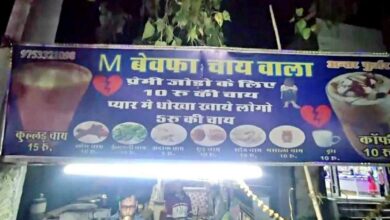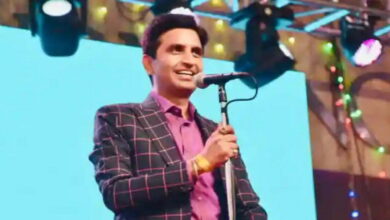‘Operation Lotus’ and Democracy

It is generally believed that the ‘Operation Lotus’ jumla came into existence after the BJP’s central leadership, Narendra Modi and Amit Shah took over. But actually it was first discussed in 2008, when BS Yediyurappa formed the government in Karnataka. After the President’s rule, he took charge of the minority government. Then ‘Operation Lotus’ was started on an experimental basis. He had got the MLAs of opposition parties to resign one by one and ensured their victory in the by-elections and made the majority of his government. After 2014, this formula was used extensively. Even after losing elections in many states, BJP came to power with the help of this formula. It was successfully used in the Northeast from Arunachal Pradesh to Madhya Pradesh and Karnataka. In some places this campaign also failed but its success ratio is high.
In the world’s largest democracy, earlier the only condition to form the government was that the party which wins the election, gets the majority of the legislators, will form the government. Later, when the coalition phase started, there were pre-election and post-poll alliances and the rule was established that the coalition which gets the majority before or after the election will form the government. Now a new era has started, in which the government of the party which wins the election with a clear majority falls, the party that won the most seats in the election is also unable to form the government and the coalition governments before or after the election also fall. Huh. This is the period of ‘Operation Lotus’ in Indian democracy. For the sake of argument, some people say that even during the Congress era, Bhajan Lal had merged the entire party with the Congress and the government was changed overnight. But that was an exceptional incident. There were no defection laws at that time and there is no evidence that the then Congress central government had designed that defection.
However, in this era of ‘Operation Lotus’, democracy is not just a matter of mandate. Now the government is not formed only by the vote of the people. Now the government is formed by formulas instead of votes. More than one formula for government formation has been invented. One wonders why the Bharatiya Janata Party has not yet patented this new form of democracy and new formulas for government formation! However, in every new formula for government formation, some elements are similar and their reactions are also similar, but every time some new element is added to it, which increases its success percentage. The most successful formula till date is the one which was invented by BS Yediyurappa. That is, holding the by-elections by getting the MLAs of other parties to resign and forming their own government with their help. This formula was adopted with great success in Karnataka in 2019 and Madhya Pradesh in 2020. In Karnataka, Congress and JDS formed the government in alliance after the elections held in May 2018. In July 2019, some Congress and JDS MLAs had left Bangalore and reached Mumbai, where the BJP was in government at that time. Later those MLAs resigned, reducing HD Kumaraswamy’s government to a minority and the governor administered oath to BJP’s BS Yediyurappa.
Unlike Karnataka, the Congress government was formed in Madhya Pradesh with an absolute majority. The Congress had defeated the BJP in the 2018 elections after three consecutive defeats. It had got a single seat majority but the mandate was very clear. There too, the story of Karnataka was repeated in 2020 during the Corona epidemic. The MLAs of Madhya Pradesh had left Bhopal and reached Bengaluru, where the BJP government formed through ‘Operation Lotus’ was running. The latter story is history. All the MLAs who left the Congress resigned, reducing the Kamal Nath government to a minority and then the Governor administered the oath to Shivraj Singh Chouhan of the BJP, in which almost all the MLAs who left the Congress were made ministers.
A different formula from this traditional formula of ‘Operation Lotus’ was tried in Arunachal Pradesh, where Congress Chief Minister Pema Khandu formed the People’s Party of Arunachal to form his government in September 2016 and three months later in December 2016 BJP with 43 MLAs got included in. In this way the BJP with two MLAs turned into a ruling party with 45 MLAs. A third formula was tried in Goa, where the Congress became the single largest party by winning 17 seats in the 2017 election. The BJP had miserably lost the election, reducing its number of MLAs from 22 seats to 12. Nevertheless, with the support and sabotage of other parties, he had formed his government from the BJP. This formula was also successfully tried in Manipur in the same election. ‘Operation Lotus’ was attempted in Rajasthan in July 2020 but the operation failed due to the magic of Chief Minister Ashok Gehlot.
Now it is interesting to see which formula is adopted in Maharashtra. In Maharashtra, BJP tried a completely new formula in 2019 but was not successful. Under that formula, Sharad Pawar’s nephew Ajit Pawar was sworn in as the Chief Minister and Ajit Pawar as the Deputy Chief Minister from the Governor in the dark. But that formula had failed. Maharashtra is not in a position to try the Karnataka and Madhya Pradesh formula as a large number of MLAs will have to resign and even then BJP will not be guaranteed to form the government. Therefore, the Arunachal Pradesh formula is being followed there. A separate faction is being formed from Shiv Sena, which may later join BJP.
In all the experiments done by the BJP to form the government with different formulas, some elements are similar. Like central agencies played a big role in this. Money power also played an important role. The greed of the creamy post also came in handy and the most important role was the role of the Raj Bhavans. Overall, the most important element of democracy, the vote of the people, played the least role. It can also be said that the people either defeated the BJP or kept it away from the majority, but using other non-democratic elements, the BJP formed its government. This era of democracy is very worrying. The parties which are silent or enjoying the plight of Shiv Sena at this time should remember that someday their time may come.






